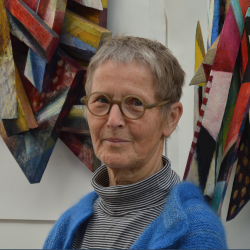
CHRISTEL ROSENFELD
...Page is loading...

Düsseldorf / Germany
He developed a conceptual pictorial language and multimedial artistic practice, which brought him many acknowledgements: Kupcsik won the STRABAG International Art Award (2002), the Ludwig Foundation Prize (1999) and the Deutsche Telekom Fine Art Award (2000).
Kupcsik’s endeavour lies in the deconstruction of iconic images throughout a series of transformation processes, crossing different medias, such as painting, photography,...
He developed a conceptual pictorial language and multimedial artistic practice, which brought him many acknowledgements: Kupcsik won the STRABAG International Art Award (2002), the Ludwig Foundation Prize (1999) and the Deutsche Telekom Fine Art Award (2000).
Kupcsik’s endeavour lies in the deconstruction of iconic images throughout a series of transformation processes, crossing different medias, such as painting, photography, drawing and modelling. By destroying power-representing icons he puts a critical comment to the contemporary fetishisation of power, either in politics, sexuality or in the artistic canon.
He chooses iconic figurative references (let this be a press image of Salma Hajek or Braques Woman with Easel or popular pornographic scenarios). He builds this reference-material into a 3D model made from leftovers found in his studio, and after immediately starts to manually decompose it. This step by step process is documented with photos and can be described as constant transformation of the figurative into a more and more abstract language. The final artwork captures the last stadium of deconstruction, either as photography, painted on canvas or as drawing.
Since the destroyed 3D models are built of leftovers from former painting processes the sampling of Kupcsik becomes not only a reinterpretation of the iconic images but always includes a direct reflection of his own personal practice as a painter alike. With references to the Cubists the deconstruction process Kupcsik radically rewrites the historical genre of painting and the still – and again – very prominently present Hungarian painting tradition is turned into a multimedial artistic practice.